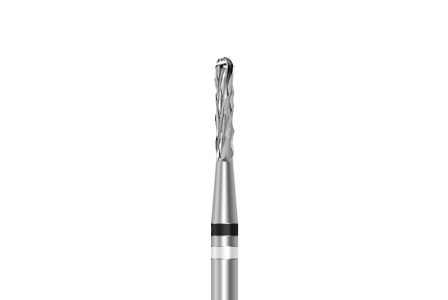Tungsten Carbide Burs v Steel (Single use) burs for Caries removal (Cavity Excavation)

As a dentist, caries removal is a daily and common task. The process of removing decayed tooth material is an important part of dental treatment. There are several types of drills used for caries removal, but the most commonly used are Tungsten Carbide burs (TC burs) and steel burs. In this blog, we will explore the difference between Tungsten Carbide burs and steel burs for caries removal.
First, let’s start with Tungsten Carbide burs. TC burs are made of tungsten carbide, a material that is known for its hardness and durability. These burs have a very sharp cutting edge that makes caries removal quick and efficient. The TC burs come in various shapes and sizes generally most clinicians tend to prefer them over steel burs as they can be sterilised and reused, they are normally available in a single cut but thanks to Frank Dental you now the option to use them with a X-Cut which reduces vibration making the procedure more comfortable for your patients but also better for your handpieces, the other benefit of these burs is the neck is thinner which offers better visibility, finally they are also available in a longer length shank (RAL, 26mm) allowing dentists to choose the appropriate bur for different types of caries.
On the other hand, steel burs are made of a softer material compared to tungsten carbide. Steel burs are less expensive than TC burs. However, they lose their sharpness relatively quickly, which can lead to a less efficient caries removal process. Steel burs are also more likely to cause stress on the tooth structure, leading to micro fractures that can cause the tooth to break later on not to mention that they can not be sterilised and are actually a single use item.
While steel burs may be more affordable and accessible, TC burs have several advantages that make them a popular choice for caries removal. One of the primary advantages of TC burs is their efficiency during the removal of caries. The sharp cutting edge of TC burs and their ability to maintain that sharpness throughout the procedure means the Clinician can work at a faster pace without compromising the quality of the procedure.
TC burs have less vibration (Even more so with the Frank Dental SXM x-cut), which makes them more comfortable for patients, resulting in a faster and less traumatic procedure. TC burs are also less likely to generate heat. The heat generated during a caries removal procedure can be harmful to the tooth and nerve tissue. Tungsten Carbide burs produce less heat compared to steel burs, leading to less discomfort for the patient.
In conclusion, Tungsten Carbide burs are a superior choice for caries removal. Their hardness, durability, sharpness, and efficiency make them the ideal bur for this procedure. While steel burs may be more affordable, they cannot compete with the advantages of Tungsten Carbide burs. Ultimately, the use of TC burs results in a faster, safer and more comfortable procedure for both dentist and patient.



